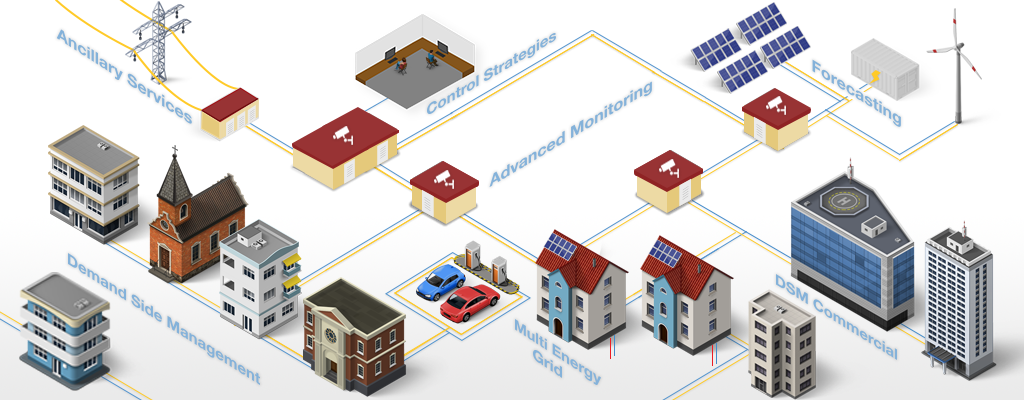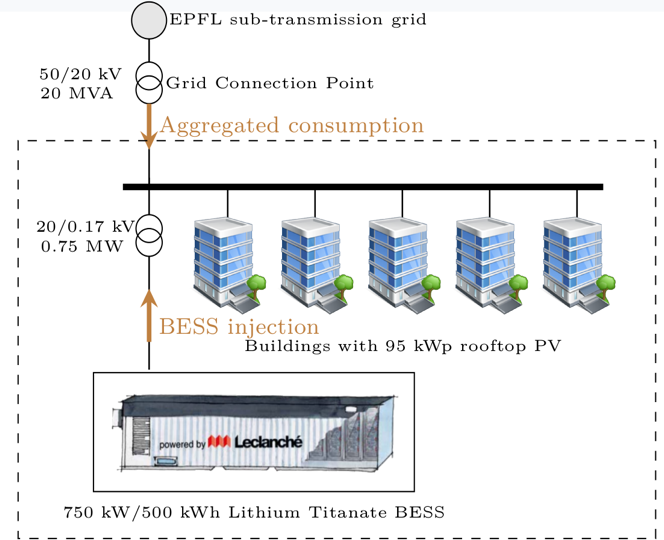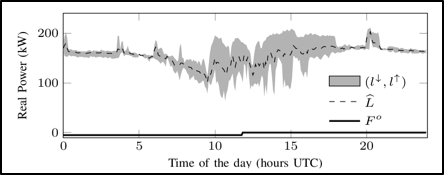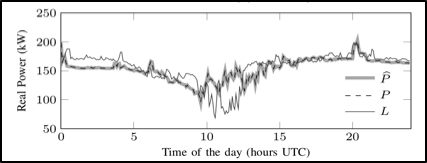
Innovation Challenges
The increased penetration of distributed renewable poses a number of fundamental problems for the regional grids.
- First, the volatility and non-dispatchability of wind and solar energy requires an increased amount of generation reserves that, paradoxically, may produce an increased level of CO2 emissions.
- Second, power imbalances and the compensation of voltage-level fluctuations require expensive capital investments and engineering works associated to the upgrade and reinforcement of distribution/transmission grids.
- Third, the existing control methods were developed for traditional, centralized power systems with a relatively small number of large resources; they are not applicable to systems with a large penetration of dispersed and non-dispatchable generation.
Such problems require a complete re-engineering of the electrical infrastructure with particular reference to the distribution systems since the direct control of every resource is clearly too complex when the number of systems gets large.
Objectives
For the tackling of these challenges:
- the first objective of this WP is to develop accurate forecasting tools of renewable energy production systems with the granularity of regional grids (i.e., urban/rural contexts). These forecasting tools will be used to evaluate the support of these resources to the ancillary services of electrical distribution grids. This part of the project will include both photovoltaic and wind generation production along with small hydro-power units.
- The second main research activity will focus on new advanced metering infrastructures for both medium and low voltage grids. The aim is to provide reliable, deterministic and real-time data for the assessment of the distribution grids real-time state.
- The third main objective of this WP is knowledge of the network state will then serve optimal control algorithms. In particular, this part will assess the potential topologies of two different control architectures (i.e., centralised vs decentralised) as well as the evaluation of the elements to be controlled (i.e., storage systems, demand side management). Concerning the optimal control algorithms, research is expected to be done in the four main item that refers to the interaction of the electrical grid with other energy network (in particular, in the urban context). The final item that will be evaluated concerns the definition of new grid codes with particular reference to the grid accessibility of distributed generation/active customers/storage systems.
Highlights
Real-time state estimation of the Lausanne 125 kV sub-transmission network using PMUs
A single platform for the real-time monitoring, protection and control of the grid
With only the use of measurements provided by Phasor Measurement Units (PMUs), a very accurate, fast and frequent execution of SE, called Real-Time State Estimation (RTSE) can be achieved.
In addition to the performance’ improvement of applications that are already using the SE solution (e.g., security analysis), RTSE can support real-time applications, such as protections and fault location.
Goal
This project aims at validating RTSE based on PMUs in a real-scale electrical grid and at demonstrating the capability of RTSE to support hard real-time applications, such as power-system protections.
Results
PMUs and a Phasor Data Concentrator were used, that are developed at EPFL and characterized by high accuracy and low latencies.
RTSE has been successfully implemented and its performance assessed in the Lausanne 125 kV sub-transmission network.
The proposed PMU-based monitoring infrastructure considerably improves the grid-operator visibility of its critical assets.
A fault location method that is based on the RTSE solution was successfully experimentally validated.
The performance of the developed fault location technique is not influenced by the fault type, the network topology (radial or meshed), the neutral treatment and the presence of distributed generation.
The developed solution allows the grid operator to concentrate in a single platform the monitoring protection and control functionalities. This avoids the proliferation of heterogeneous monitoring infrastructures that are dedicated to the solution of a single problem.
The developed fault location technique can be integrated within a Fault Location Isolation and Service Restoration (FLISR) logic that reduces the grid downtime and improves the related performance indices.
Next step
As a next step, this technology will be deployed and tested in a medium voltage distribution grid Energie.

Figure 2 : Map of the 125 kV sub-transmission network of Lausanne highlighting the PMU and PDC locations
Further reading:
Demonstration of a dispatched-by-design architecture for heterogeneous stochastic resources
Control framework to dispatch, peak shaving, congestion management, economic optimization of the consumption by using a battery energy storage system
Academic partner: EPFL (DESL) ([email protected]) Industry partner: Leclanché
Funding: SCCER-FURIES, Canton de Vaud Project Duration: 2014-2016 (2 years)
This project aims at demonstrating how utility scale storage can be integrated to achieve dispatched-by-design operation of stochastic resources without the need of complex communication and coordination mechanisms.
Results
For the achievement of this goal, a control framework has been developed for dispatching, peak shaving, congestion management, and economic optimization of the consumption by using a battery energy storage system (BESS). It consists of a day-ahead planning and real-time phase for the actuation of the battery active power set-point.
The concept was validated at the 750~kW/520~kWh Lithium Titanate BESS at DESL, EPFL in the so-called dispatchable feeder setup.
The innovation of this solution lies on the applicability of the dispatchability concept to a set of heterogenous resources; the decrease of the need for regulating power during intra-day grid operation; the fully decentralized control with minimal coordination requirements; and the model predictive control by including electrochemical models of the battery.
Next step
As an next step, the control framework will embed multiple controllable elements, such as other batteries or shiftable demand.
 |
|
Figure 5a : The dispatchable feeder setup (dashed line) |
 |
 |
| Figure 5b : Day-ahead operation. Forecasted prosumption of 5 EPFL buildings equipped with rooftop-PV panels in terms of expected value, prediction intervals and dispatch plan (dashed and shaded area; and thick line). | Figure 5c : Prosumption realization (full line) and the power flow at the grid connection point (dashed line), corrected by controlling the battery power injection. |
Further reading:
SMMC – Study on mesoscale-microscale coupling strategies for wind energy prediction improvement
Models for wind energy prediction for researchers, planners and operators in the Wind Energy field
Academic partner: EPFL (WIRE) ([email protected]) Funding: SFOE, EOS Holding
Project duration: 2015-2016 (1.5 years)
Goal
This project focuses on the investigation of strategies of coupling a mesoscale weather model with a microscale computational fluid dynamics model, and performance of case studies to verify and validate the proposed coupling approaches. This will allow the improvement of wind energy prediction over complex terrain and their impact on the grid.
Results
A simple strategy was developed to couple the mesoscale Weather Research and Forecasting (WRF) model with the Large-Eddy Simulation (LES) code developed by the SCCER-FURIES partner. Preliminary test of the coupled WRF-LES framework was performed in the Juvent wind farm at the Jura mountains.
This tool predicts efficiently and accurately the wind and power output over complex terrain. These make it a powerful tool for assessing wind energy potential, and also for optimizing the design, operation and integration to the grid of wind farms.
Next step
The coupled mesoscale/microscale model is currently under further development and its applications to more case studies are on-going.
 |
|
Figure 10 – Visulization of the terrain model and wind turbines for the Juvent wind farm at the Jura mountains, where the coupled WRF-LES framework has been tested.
|
Further reading:
Modelling a domestic heat pump in application to demand side management and explicit set-point control
A control-oriented model of the conversion system to benefit from low tariff periods and environmental heat gains (i.e. improved COP)
Funding: NRP 70 Project duration: 2016-2020 (4 years)
Goal
This project hence aims at developing novel multi-dynamic models for prediction of inputs and outputs, and control of domestic heat pumping systems. These models reflect the needs and interests of both the user and the grid operator.
Results
A control-oriented dynamic model of the standard heat pump was developed which can be implemented in both a predictive control framework for demand side management and an explicit set-point control method for active grid operation. The model parameters are fitting from actual measurements of a 9.3 kW (A2/W35) air-water heat pump installed at the DESL lab.
The proposed approach provides building service users and potential microgrid operator with non-intrusive (i.e. without requiring any additional monitoring instruments) model formulations which can be easily adapted to each heat pumping system to provide both fast power set-point predictions and dynamic thermal responses to the interested parties
Next step
As a next step of this project, the defined models are implemented through model predictive control and explicit set-point control to validate the models for real-time applications.
 |
|
Figure 11: Static polynomial-based model fitting on the active power consumption measurements of a on/off controlled air-water heat pump
|
Further reading:
SMMC – Study on mesoscale-microscale coupling strategies for wind energy prediction improvement
Models for wind energy prediction for researchers, planners and operators in the Wind Energy field
Academic partner: EPFL (WIRE) ([email protected]) Funding: SFOE, EOS Holding
Project duration: 2015-2016 (1.5 years)
Goal
This project focuses on the investigation of strategies of coupling a mesoscale weather model with a microscale computational fluid dynamics model, and performance of case studies to verify and validate the proposed coupling approaches. This will allow the improvement of wind energy prediction over complex terrain and their impact on the grid.
Results
A simple strategy was developed to couple the mesoscale Weather Research and Forecasting (WRF) model with the Large-Eddy Simulation (LES) code developed by the SCCER-FURIES partner. Preliminary test of the coupled WRF-LES framework was performed in the Juvent wind farm at the Jura mountains.
This tool predicts efficiently and accurately the wind and power output over complex terrain. These make it a powerful tool for assessing wind energy potential, and also for optimizing the design, operation and integration to the grid of wind farms.
Next step
The coupled mesoscale/microscale model is currently under further development and its applications to more case studies are on-going.
 |
|
Figure 10 – Visulization of the terrain model and wind turbines for the Juvent wind farm at the Jura mountains, where the coupled WRF-LES framework has been tested.
|
Further reading: